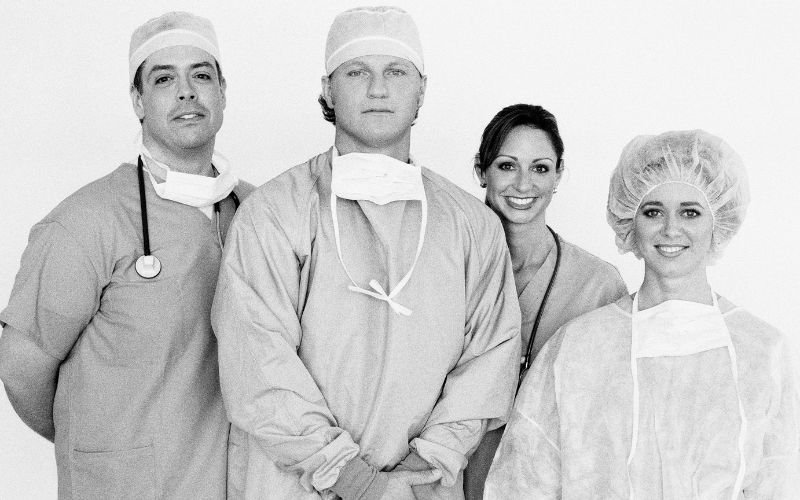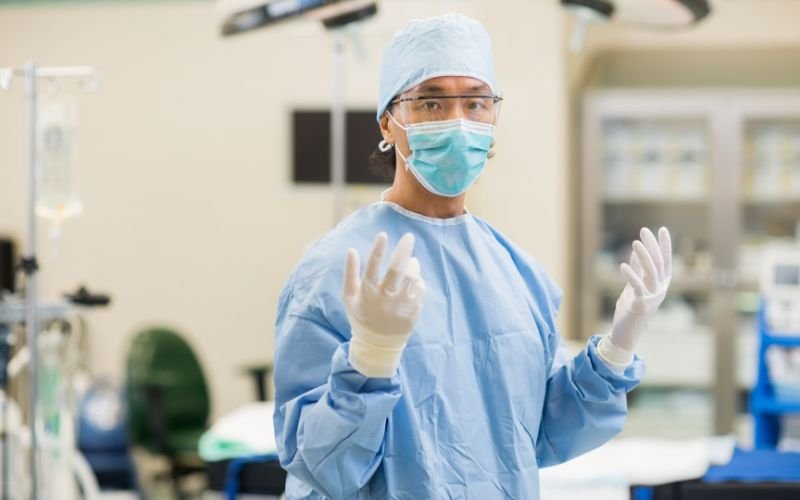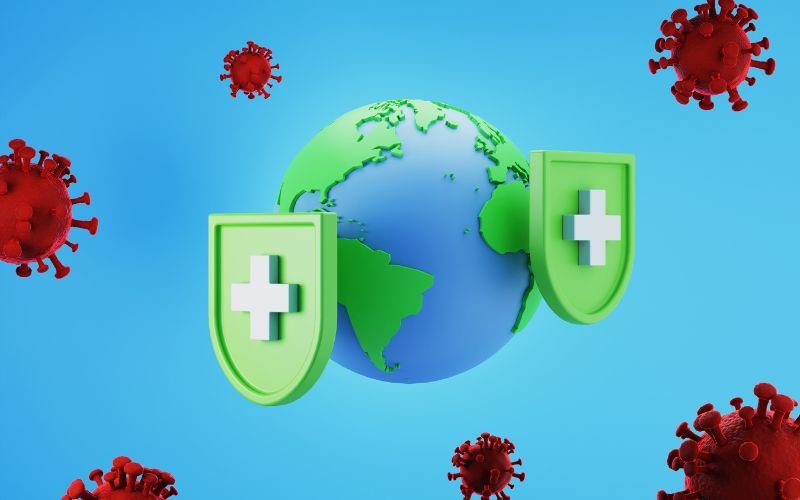Surgical scrubs are more than simply uniforms in the busy, highly regulated settings of hospitals and clinics; they are very essential for preserving sterile conditions, avoiding infections, and guaranteeing the best standards of patient treatment. Although their importance could often be disregarded, surgical scrubs are an unsung hero in the medical field, particularly in infection control. Emphasising their contribution to a safe and efficient medical environment, this paper investigates the fundamental role medical scrubs play in the Australian healthcare system.
The Foundation of Surgical Scrubs
Historical Background
The development of surgical scrubs is a journey reflecting the developments in medical research and the increasing knowledge of infection control. Medical workers used white clothing originally to represent purity and cleanliness. For staff members as well as patients, the dazzling white outfits often resulted in eye strain under strong operating lights and made bloodstains more obvious.
Early in the 20th century, the medical field switched to now generally accepted green and blue scrubs. In high-stress events, these colours help to create a soothing ambience and are less taxing on the eyes. The change from conventional white to modern scrub designs—including slacks and shirts with short sleeves—marked a major breakthrough in enhancing the psychological comfort and practicality of medical practitioners. Today, a wide variety of these medical scrubs are available online, making it easier for healthcare professionals to access high-quality options that suit their needs.
Australian Regulations and Standards
Regulatory Authorities
The Therapeutic Goods Administration (TGA) and the Australian Commission on Safety and Quality in Healthcare set strict rules controlling the quality and safety of surgical or nurses scrubs in Australia. Maintaining a sterile atmosphere in healthcare environments depends on scrubs meeting rigors standards, so these companies guarantee that.
Standards and Compliance
The Australian guidelines controlling surgical scrubs are meant to guarantee that this clothing sufficiently prevents infection. Healthcare institutions must comply with these guidelines; they cover characteristics like fabric quality, durability, and the capacity to resist regular laundering without sacrificing protective qualities. Following these guidelines is absolutely essential to stopping the spread of contagious agents in healthcare settings.
Hygiene and Infection Control
Role in Infection Prevention
Acting as a barrier between the user and any pollutants, surgical scrubs are essential in infection prevention. The scrubs’ fabric is designed to withstand bacterial invasion and reduce microorganism spreadability. Protecting patients from healthcare-associated infections (HAIs), a major issue in hospitals all over, as well as healthcare professionals, depends on this barrier function.
Value of Maintenance and Scrub Fabric Quality
Ensuring the efficiency of surgical scrubs in infection control depends mostly on the quality of the fabric employed. Good materials not only create a physical barrier but also fight bacterial buildup. Maintaining the protective characteristics of scrubs depends equally on regular maintenance and appropriate washing of them. Inadequate cleaning could cause the cloth to fade, therefore lowering its capacity to avoid contamination.
Preventing Healthcare-Associated Infections (HAIs)
Impact of HAIs
Healthcare-related infections (HAIs) are a global issue, and Australia is not an exception. Under extreme conditions, HAIs can be fatal; they can also result in longer hospital stays and higher healthcare costs. The Australian Institute of Health and Welfare reports that strong infection control strategies are sorely required since many hospital admissions result in HAIs.
Scrubs’ Contribution
One basic component of infection control plans meant to lower HAIs is the correct usage of surgical scrubs. Healthcare workers can reduce the danger of cross-contamination by donning scrubs compliant with regulations and adhering to correct hygienic standards. Maintaining a sterile environment depends mostly on this habit, especially in surgical environments where infection risk is highest.
Adherence to Infection Control Guidelines
Comprehensive Guidelines
In hospital environments, infection control refers to a whole strategy comprising not just the use of surgical scrubs but also thorough hand hygiene, sterilisation processes, and personal protective equipment (PPE). With surgical scrubs central to this protective network, these rules are meant to provide a multilayered defence against the transmission of diseases.
Legal Requirements
The legal obligation for healthcare institutions in Australia is to follow infection control policies. Ignoring these rules may result in fines and, more critically, jeopardise patient safety. With surgical scrubs being a necessary part of these rules, the legislative framework guarantees that healthcare professionals maintain high standards of treatment.
Comfort and Practicality
Design Considerations
Although surgical scrubs mostly serve to prevent infection, their design must also allow for the complex nature of the healthcare profession. Scrub design must give comfort and practicality first priority, especially women’s scrub tops, which should be perfectly fit. Medical practitioners spend long hours on their feet and need clothing that will let them move easily.
Features that Enhance Ease of Movement and Focus
Modern scrub designs include ergonomic cuts that improve comfort and a complete range of motion, breathable fabrics, and flexible materials. In surgical environments, when accuracy and attention are needed, these characteristics are especially vital. Better focus and performance made possible by comfortable scrubs eventually help patient care.
Variety in Scrub Designs
Evolution of Designs
Over the years, surgical scrubs’ design has changed dramatically from essentially practical clothing to clothing combining utility with fashion. Scrubs today come in a variety of colours, designs, and fits to meet the several demands of medical workers.
Personal Expression
Apart from their practical use, new scrubs give medical practitioners chances for personal expression. Although the required hygienic requirements remain the same, scrubs nowadays come in varied shapes that let people follow the dress codes of different healthcare institutions or highlight their own character. This diversity also improves organisational efficiency by allowing one to distinguish between several departments inside a hospital.
The Role of Technology in Scrub Innovation
Advancements in Fabric Technology
Fabric technology has greatly shaped the development of surgical scrubs. Antimicrobial materials that aggressively stop bacterial development make up modern scrubs nowadays. Essential in lowering the risk of infections in healthcare environments, these textiles are designed to resist numerous washings and yet retain their protective characteristics.
Sustainable and Eco-Friendly Materials
Using environmentally friendly materials in the manufacturing of surgical scrubs is becoming more common in line with the worldwide move towards sustainability. While lowering the environmental impact, these materials—including recycled polyester and organic cotton—offer the same degree of defence. This part can also include how Australian producers of medical scrubs are using sustainable methods throughout manufacturing.
Psychological Impact of Scrub Colours
The Psychology Behind Scrub Colours
The colours used in surgical scrubs have psychological effects on patients as well as healthcare professionals; they are not random decision. Blue and green, for example, are often chosen as they are relaxing colours that help to lower tension and stress. This part can explore the psychology of scrub colours and how they affect the ambience in medical environments.
Impact on Patient Perception
Additionally important for patient impressions is colour. More pleasant experiences result from lighter, more calming colours, helping to reduce the anxiety patients face in a medical atmosphere. Additionally, helping patients and staff quickly identify jobs by using colour-coded scrubs for various departments helps the hospital be generally efficient.
The Future of Surgical Scrubs in Australia
Innovations on the Horizon
With continuous developments targeted at enhancing comfort and utility, surgical scrubs seem to have a bright future. This part can cover possible future innovations like smart textiles tracking wearers’ health or scrubs with integrated technology improving infection control strategies.
Impact of Global Trends
The future of surgical scrubs in Australia is probably going to be shaped by global healthcare trends like the growing attention to infection control and the shift towards more sustainable methods. This part could help one understand how manufacturers and Australian medical experts are getting ready for these developments.
Conclusion
As essential components of the Australian healthcare system, surgical scrubs significantly affect patient care and infection control. From their historical development to the strict rules controlling their usage, scrubs have proven to be more than simply uniforms—they are essential instruments in preserving a sterile atmosphere and stopping the spread of illnesses. Healthcare workers can easily buy medical uniforms online nowadays to guarantee access to premium scrubs that satisfy safety and comfort criteria. Following infection control policies and selecting scrubs that give comfort and protection top priority will help healthcare workers guarantee the best standards of treatment for their patients. Scrubs’ position as unsung heroes in the healthcare sector is as vital as ever as their design and functions change.






